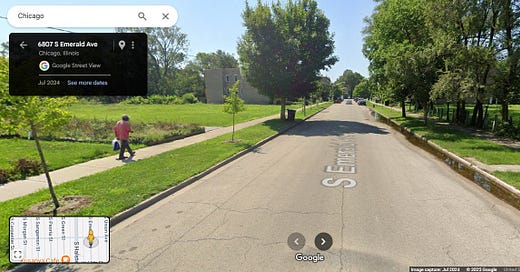How Do YIMBYs Respond To Housing Markets With *No* Demand?
Believe it or not, there are neighborhoods that are deeply devalued, and need the attention of urbanists as well.
A street view looking south of the intersection of 68th and Emerald Avenue in Chicago’s Englewood neighborhood. Source: google.com
I’ve had my differences with the YIMBY (Yes In My Back Yard) movement. Over the years I’ve written multiple pieces raising a position on zoning reform that rarely gets discussed – upzoning can open up the floodgates for new h…
Keep reading with a 7-day free trial
Subscribe to The Corner Side Yard to keep reading this post and get 7 days of free access to the full post archives.



